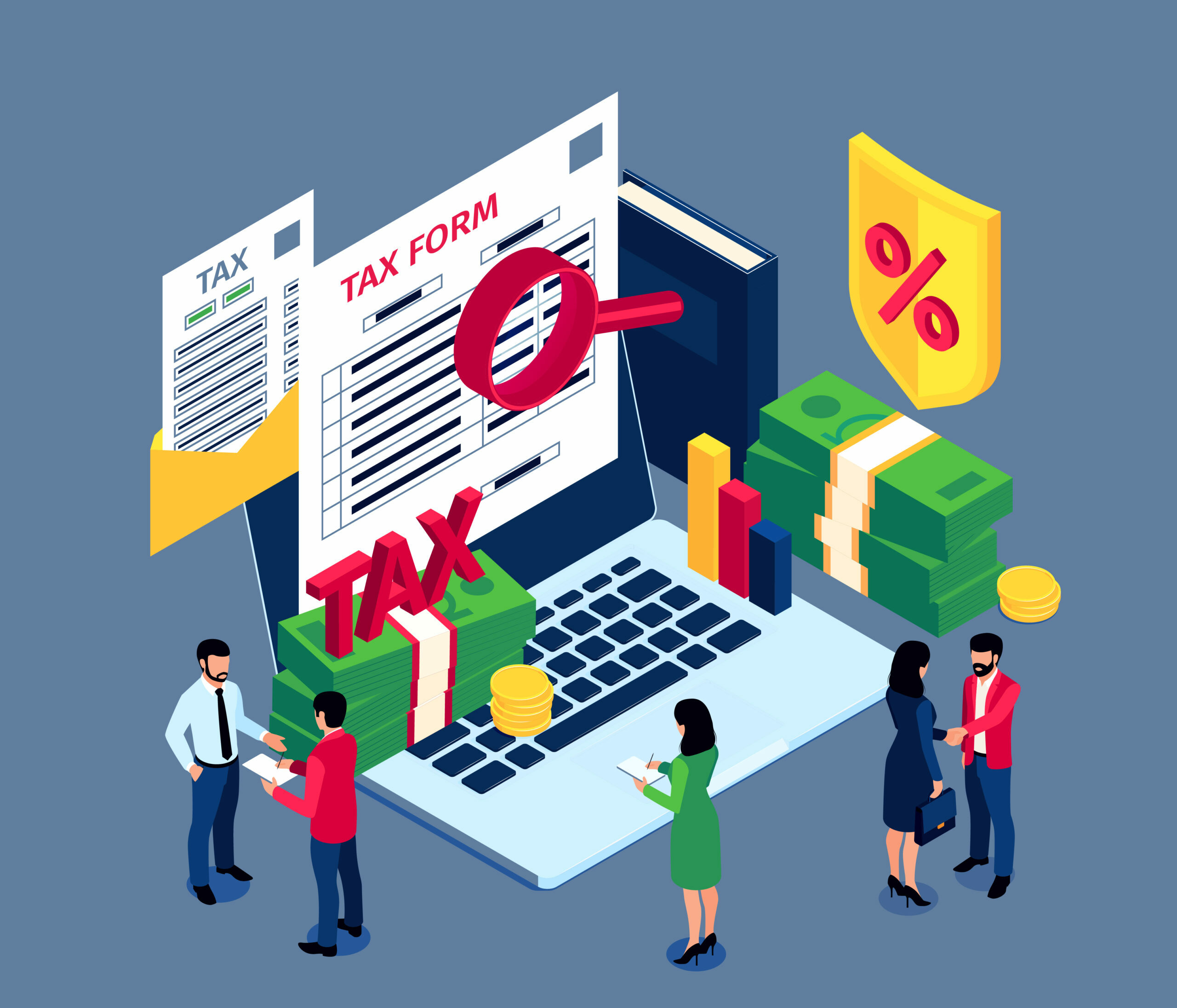Saving for retirement may seem like a distant priority, but one of the smartest steps to take now is investing in a 401(k). This retirement savings plan offers unique tax benefits that can make a big difference over time. Whether you’re new to the workforce or already established, understanding how 401(k) tax benefits work can help you make informed financial decisions that will pay off down the line. Let’s break down the tax benefits of a 401(k) plan and why they matter.
What Is a 401(k)?
A 401(k) is a retirement savings plan sponsored by employers. It allows employees to save and invest a portion of their paycheck before taxes are taken out. This means that the money you put into your 401(k) is not counted as taxable income, which can help you save more over time.
There are two main types of 401(k) accounts:
- Traditional 401(k): Contributions are made with pre-tax dollars, reducing your taxable income.
- Roth 401(k): Contributions are made with after-tax dollars, meaning the money you withdraw in retirement is tax-free.
Both types offer unique tax benefits, and some employers even allow you to contribute to both types simultaneously.
How Does a 401(k) Save You on Taxes Now?
One of the immediate tax benefits of a traditional 401(k) is its ability to reduce your taxable income. For example, if you make $50,000 a year and contribute $5,000 to your 401(k), your taxable income would drop to $45,000. This can lower the amount of federal income tax you owe, allowing you to save more in the present.
Let’s look at some ways a 401(k) can provide tax benefits throughout different life stages:
- Reducing Current Taxable Income
Contributing to a traditional 401(k) reduces your taxable income now, which can place you in a lower tax bracket. This means you might pay less in taxes today while saving more for the future. - Tax-Deferred Growth
One of the biggest advantages of a traditional 401(k) is tax-deferred growth. The money in your account can grow without being taxed until you withdraw it. This allows the investments in your 401(k) to compound faster over time compared to a regular investment account that is taxed yearly. - Employer Contributions
Many employers match a portion of their employees’ 401(k) contributions. For example, if your employer matches 50% of your contributions up to 6% of your salary, and you earn $60,000, they’ll add $1,800 if you contribute at least $3,600. This is essentially free money for your retirement that can also grow tax-deferred.
How Does a Roth 401(k) Save You on Taxes Later?
A Roth 401(k) offers a different tax advantage. While you pay taxes on your contributions now, you won’t pay taxes on qualified withdrawals in retirement. This can be particularly beneficial if you expect to be in a higher tax bracket in the future.
Here are some benefits of choosing a Roth 401(k):
- Tax-Free Withdrawals in Retirement
Unlike traditional 401(k) withdrawals, which are taxed as regular income, qualified withdrawals from a Roth 401(k) are tax-free. This can be a major advantage if tax rates rise in the future or if you expect to be in a higher income bracket during retirement. - No Required Minimum Distributions (RMDs)
Unlike traditional 401(k) accounts, Roth 401(k)s do not require you to start taking distributions at age 72 if you roll over the Roth 401(k) to a Roth IRA. This means your money can continue to grow tax-free for as long as you want.
How 401(k) Contributions Can Lower Taxable Income
To understand how 401(k) contributions lower taxable income, let’s go through an example. Suppose you make $55,000 a year and contribute $5,500 to your traditional 401(k). Instead of paying taxes on $55,000, your taxable income becomes $49,500. This reduction could mean paying a lower tax rate or saving hundreds in taxes, depending on your tax bracket.
If you’re contributing to a Roth 401(k), it won’t lower your taxable income immediately since contributions are made with after-tax dollars. However, the benefit of tax-free withdrawals in the future can outweigh this drawback, especially if you expect your retirement tax rate to be higher.
401(k) Contribution Limits
The IRS sets yearly limits on how much you can contribute to a 401(k), and these limits often change to adjust for inflation. For example, in 2023, employees could contribute up to $22,500, with those aged 50 and over allowed an additional $7,500 in catch-up contributions. These limits ensure that the 401(k) remains a viable tax-advantaged option without favoring higher-income individuals too heavily.
Maxing out your contributions every year can maximize the tax advantages of your 401(k), allowing you to grow your retirement fund significantly over time.
Additional Tax Benefits for Those Over 50
If you’re over 50, you can take advantage of “catch-up contributions.” These allow you to contribute more than the standard limit, giving you the chance to save extra for retirement. In 2023, the catch-up contribution limit was $7,500, which can provide older employees with extra tax savings while enhancing their retirement funds.
401(k) Tax Benefits During Retirement
When it comes time to retire, the way you’re taxed on your 401(k) withdrawals will depend on the type of account you have.
- Traditional 401(k)
Withdrawals from a traditional 401(k) are taxed as regular income. While this might seem like a downside, many retirees find themselves in lower tax brackets during retirement, so their tax rate may be lower than during their working years. - Roth 401(k)
Qualified withdrawals from a Roth 401(k) are tax-free, which can be incredibly advantageous if your retirement income is high or if tax rates have increased since you first started contributing.
Tax Benefits of Employer Contributions
Employer contributions to your 401(k) are not considered part of your taxable income in the year they are made, which means they add to your retirement savings without increasing your tax bill. This “free money” can also grow tax-deferred in a traditional 401(k) or tax-free in a Roth 401(k).
Many companies match employee contributions to some extent. This could mean, for example, a 100% match on contributions up to 5% of your salary. Taking advantage of this match is essentially receiving additional retirement funds without any additional tax burden.
How 401(k) Loans and Hardship Withdrawals Affect Taxes
In times of financial need, you might consider borrowing from your 401(k) or taking a hardship withdrawal. Here’s how these affect taxes:
- 401(k) Loans
Many plans allow employees to borrow up to 50% of their vested balance (up to $50,000) as a loan. Although you pay back the loan with interest, this money is not considered a taxable withdrawal. However, if you fail to repay the loan, the outstanding amount could be considered a taxable distribution. - Hardship Withdrawals
A hardship withdrawal can provide financial relief, but it’s important to note that the amount withdrawn will be taxed as income if it’s from a traditional 401(k). Also, there’s often a 10% early withdrawal penalty if you’re under 59½, although some hardship withdrawals qualify for penalty-free status.
401(k) vs. IRA: Which Offers Better Tax Benefits?
An Individual Retirement Account (IRA) is another retirement savings option that offers similar tax benefits. While IRAs have lower contribution limits, they may provide additional investment options. Here’s a quick comparison:
- 401(k): Higher contribution limits and potential employer matching.
- IRA: More flexibility in investment options, but lower annual contribution limits.
Both types of accounts offer tax advantages, and many financial experts suggest utilizing both if possible.
Key Takeaways for Maximizing 401(k) Tax Benefits
- Start Early: The sooner you start contributing to your 401(k), the more you’ll benefit from tax-deferred or tax-free growth.
- Max Out Contributions: Aim to contribute up to the maximum limit each year if possible.
- Utilize Employer Matching: Always try to contribute enough to receive your employer’s full match.
- Choose the Right Type of 401(k): Evaluate whether a traditional or Roth 401(k) is better based on your current and future tax bracket.
- Take Advantage of Catch-Up Contributions: If you’re over 50, use catch-up contributions to boost your savings.
Conclusion: Don’t Miss Out on 401(k) Tax Benefits
Investing in a 401(k) is one of the most effective ways to prepare for retirement, and the tax advantages it offers can significantly increase your savings. Whether you’re reducing your taxable income now or planning for tax-free income in the future, a 401(k) can provide substantial financial benefits. By understanding and maximizing these benefits, you’re setting yourself up for a more secure retirement and making the most of every dollar you save.

